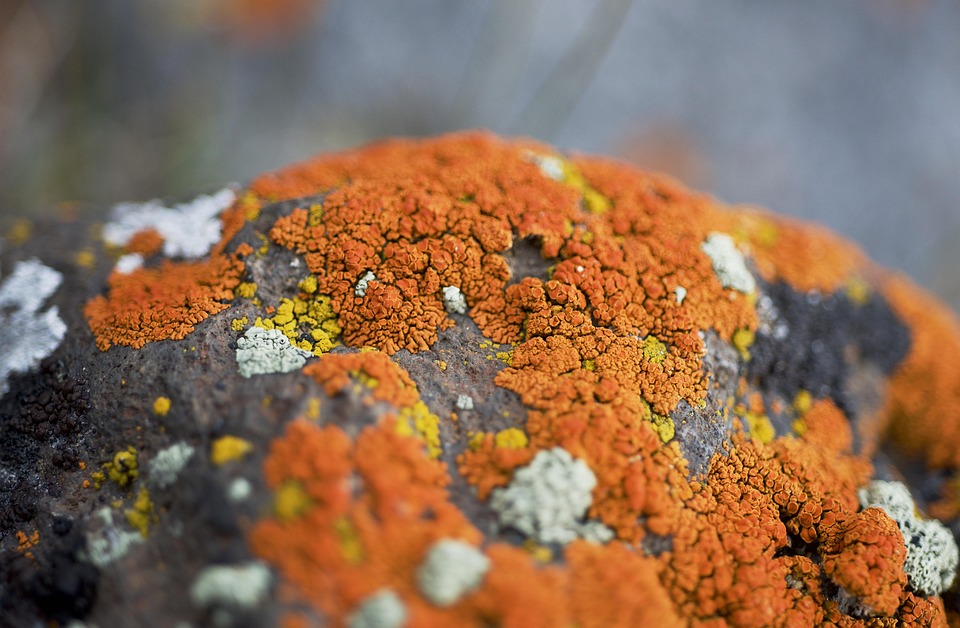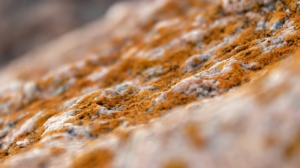The Art of Camouflage: Survival Strategies in the Animal Kingdom
Camouflage has fascinated both scientists and laypeople alike for centuries. It serves as a remarkable survival strategy that enables animals to evade predation, enhance hunting techniques, and thrive in their habitats. The ability to blend into one’s surroundings is not merely a physical trait but a complex interplay of behavior, coloration, and environmental adaptation. This article delves into the fascinating world of camouflage, exploring its various forms, mechanisms, and the significant evolutionary implications it holds within the animal kingdom.
The Definition of Camouflage
Camouflage is defined as the ability of an organism to avoid detection by other organisms through various means, primarily visual. This adaptation can manifest in several ways, including coloration, patterning, and behavior, each tailored to the specific needs and environment of the species in question. The goal of camouflage is straightforward: to increase an organism’s chances of survival by reducing visibility to predators or, conversely, to make it more formidable as a predator itself.
The Color Theory
One of the most straightforward forms of camouflage is background matching, where an animal adapts its color to resemble its surroundings. This principle relies heavily on the concept of color theory, where hues can either blend seamlessly into natural settings or create disruptive patterns that hinder direct visual recognition.
For instance, the peppered moth (Biston betularia) showcases this phenomenon beautifully. Before the Industrial Revolution in England, the majority of peppered moths were light-colored, blending into the lichen-covered trees where they rested. However, the advent of pollution darkened the surfaces of these trees, leading to a rapid increase in the darker variant of the species. This shift exemplifies natural selection in action, demonstrating how camouflage is directly linked to environmental changes and survival.
Patterns and Textures
While color plays a significant role in camouflage, patterns and textures are equally important. Many animals possess intricate designs that help break up their outlines, making them less recognizable. For instance, the zebra has stripes that may confuse predators by creating a visual illusion when they move in groups, a phenomenon known as "motion dazzle."
Additionally, some species utilize disruptive coloration to camouflage themselves. The cuttlefish, for example, has the extraordinary ability to change not only its color but also its texture within seconds, allowing it to blend into rocks, corals, or sandy sea beds. This remarkable adaptability affords it a significant advantage over both predators and prey, as it uses camouflage to stalk its next meal while simultaneously avoiding becoming one itself.
Behavioral Aspects of Camouflage
Camouflage is not limited to physical characteristics; behavioral adaptations also play a significant role in an animal’s survival. Many species have developed specific behaviors that enhance their camouflage, turning it from a passive trait into an active strategy.
Freeze Behavior
One of the simplest yet effective behaviors is the ‘freeze’ response. Numerous animals, from insects to larger mammals, will become immobile when they sense danger. By doing so, they rely on their body’s coloration and patterns to blend into their environment, enabling them to go unnoticed.
For example, a common frog (Rana temporaria) may remain perfectly still when approached by a predator, relying on its mottled skin to mimic the leaf litter underneath it. This freeze behavior significantly reduces the likelihood of detection, employing passive camouflage in a moment of crisis.
Countershading
Another fascinating behavioral adaptation is countershading, a term used to describe how some animals have a darker coloration on their dorsal side (the top) and a lighter one on their ventral side (the underside). This strategy helps to counteract the effects of sunlight and shading in their environment, creating an illusion of flatness and reducing visibility.
Marine animals like sharks exhibit this adaptation; from above, their dark backs blend into the depths of the ocean, while from below, their lighter bellies match the brightness of the sky above. This dual coloration allows them to ambush prey effectively while evading detection.
Camouflage in Specific Environments
The effectiveness of camouflage is also closely related to the specific environment in which an animal resides. Different ecosystems present unique challenges and opportunities that have shaped the evolution of camouflage strategies across species.
Terrestrial Environments
In forested environments, where dappled light and constant movement create dynamic patterns, many animals have adapted through complex coloration and texture. The leaf-tailed gecko of Madagascar showcases this beautifully; its shape and coloration mimic that of leaves, allowing it to go unnoticed even by the most observant predators.
Conversely, in arid deserts, animals like the sand-colored fennec fox (Vulpes zerda) have developed a light coat that blends seamlessly with the sandy terrain, enhancing their chances of survival. Desert-dwelling creatures often incorporate behavioral adaptations, such as nocturnal activity, to avoid detection from predators.
Aquatic Environments
In aquatic habitats, camouflage takes a different form. The changeable colors of the octopus and cuttlefish serve not only to conceal themselves from predators but also to communicate with other members of their species. The ability to seamlessly transition between colors and textures highlights the sophistication of camouflage in the marine world.
Reef-dwelling fish, like the flatfish, employ a flat body shape and mottled skin that allows them to blend with the sandy ocean floor. When threatened, they bury themselves in the sand, making them near invisible.
Arctic and Antarctic Regions
In colder climates, such as the Arctic and Antarctic, seasonal changes dictate the camouflage strategies employed by animals. The arctic fox (Vulpes lagopus) changes its fur color from brown in summer to white in winter, mirroring the changes in its habitat. This seasonal adaptation is crucial for both hunting and evasion, as a white fox blends perfectly into the snowy landscape, enabling it to ambush unsuspecting prey.
The Evolutionary Significance of Camouflage
The evolutionary significance of camouflage cannot be overstated. It is a clear example of natural selection at work, where individuals that possess better camouflage are more likely to survive and reproduce. Over generations, these advantageous traits become more prevalent within a species, leading to remarkable adaptations.
Speciation and Diversification
Camouflage also contributes to speciation and diversification. In environments where similar species coexist, differences in camouflage can reduce predation and competition, allowing various species to thrive. This phenomenon is particularly evident in areas with high biodiversity, such as coral reefs, where countless species have evolved unique camouflage strategies.
Implications of Climate Change
As environments continue to change due to climate change, the dynamics of camouflage will inevitably be affected. Species may be forced to adapt quickly as their environments change, whether through shifting habitats, changes in predator and prey dynamics, or altered vegetation patterns. Those species that cannot adapt may face extinction, showcasing how vital camouflage is to the survival of many organisms.
Human Applications of Camouflage
While our exploration has focused on natural examples, it’s worth noting how the principles of camouflage have been adopted by humans, especially in military and fashion applications. Military camouflage gear employs various patterns and colors designed to blend into specific environments, enhancing concealment on the battlefield.
Moreover, in the field of design and art, the principles of camouflage have inspired various aesthetic movements, influencing everything from fashion to interior design.
The Future of Camouflage Research
As we continue to explore the mechanisms of camouflage, researchers are uncovering new layers of complexity. Biomimicry, the practice of drawing inspiration from nature to solve human challenges, is gaining traction in fields ranging from material science to robotics. Innovations inspired by biological camouflage could lead to advancements in stealth technology, adaptive materials, and even healthcare.
Conclusion
The art of camouflage is a testament to the ingenuity of evolution and the diverse strategies life has developed for survival. Whether through color, pattern, behavior, or environmental adaptation, the ability to remain hidden or undetected has shaped the lives of countless species across the planet.
Understanding these strategies enriches our appreciation for the complexity of life on Earth and reminds us of the intricate connections that bind all living beings. The ongoing study of camouflage not only enhances our knowledge of the animal kingdom but may also lead to profound applications and innovations in various fields, demonstrating that the lessons from nature are as relevant to humanity as they are to the creatures we seek to understand.
In this grand tapestry of life, camouflage serves as a vibrant thread, intricately woven through the fabric of survival, adaptation, and resilience.
Footnotes
- McGregor, P.K. (2004). "The Evolution and Functions of Animal Camouflage." Animal Behaviour, 67(6), 1201-1208.
- Steven, D. (2010). "Camouflage in Nature and Modern Warfare." Journal of Defense Studies, 27(1), 34-52.
- Cott, H.B. (1940). Adaptive Coloration in Animals. London: Hutchinson.
- Ruxton, G.D., Allen, W.L., Sherratt, T.N., and Speed, M.P. (2004). "Avoiding Attack: The Evolutionary Ecology of Crypsis, Warning Signals, and Mimicry." Oxford University Press.
- Roper, T.J. (2005). "Camouflage: A Field Guide." Nature’s Patterns and Strategies.
This exploration of the art of camouflage highlights not only the beauty of nature but its incredibility in adaptation and survival. Understanding these processes remains fundamental to both biology and conservation efforts, shedding light on the intricate relationships that sustain life on Earth.


























Add Comment